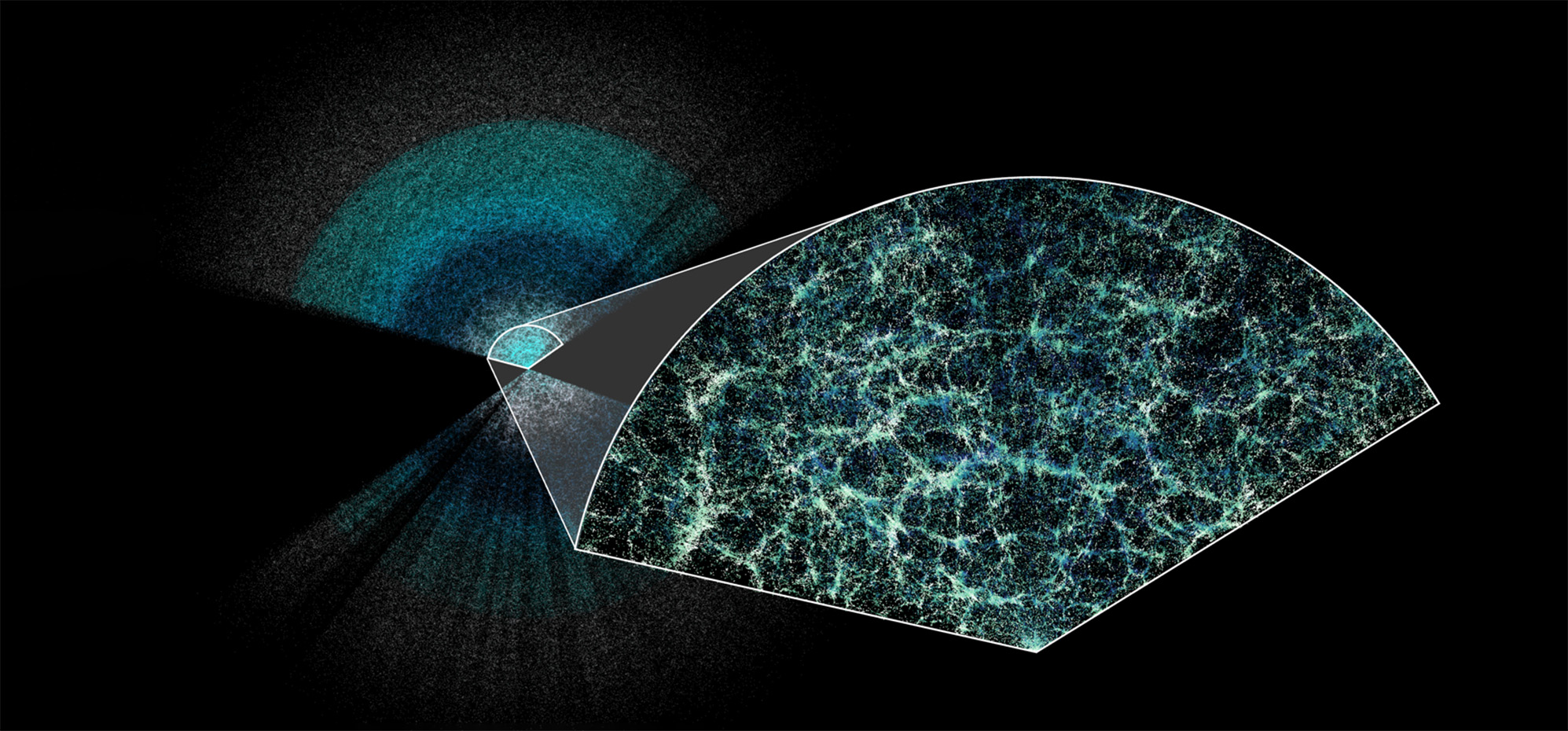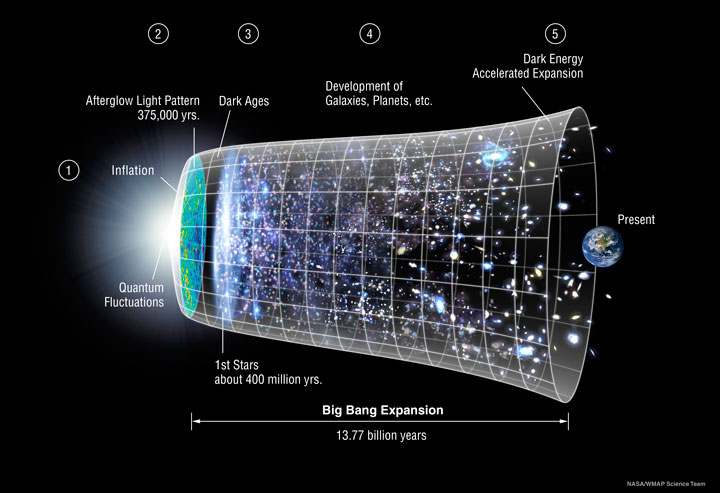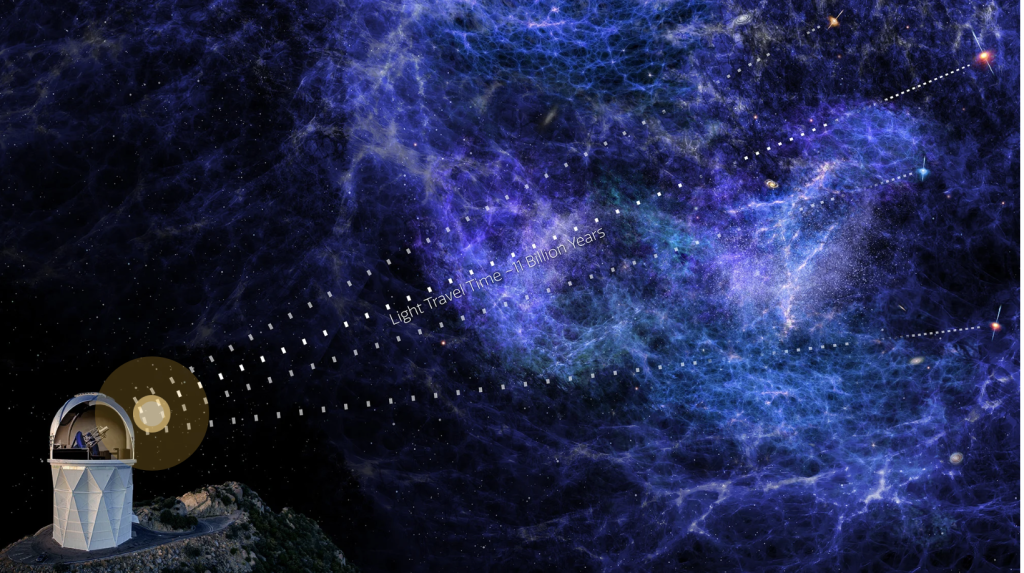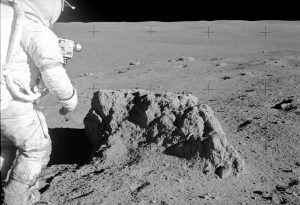Just Revealed: The Largest 3D Map of Our Universe to Date!
7th Apr 2024
Using an impressive array of 5,000 tiny robots housed within a telescope perched atop a mountain, scientists have achieved a groundbreaking feat: they’ve created the most extensive 3D map of our universe to date. This map, generated with the Dark Energy Spectroscopic Instrument (DESI), has enabled researchers to measure how fast the universe expanded over 11 billion years and make unparalleled discoveries of dark energy and the enigmatic force driving the universe’s accelerating expansion.
In a landmark achievement, DESI has produced the most precise 3D map of the cosmos ever assembled, providing unprecedented accuracy insights into the universe’s growth. For the first time, scientists have measured the expansion history of the early universe with a precision exceeding 1%, offering us unparalleled clarity into the universe’s development.
Back Then & Now: What Do We Know About the Universe?
Our current understanding of the universe, encapsulated in the Lambda Cold Dark Matter (Lambda CDM) model, posits the coexistence of two fundamental components: cold dark matter (CDM) and dark energy (Lambda). These entities exert opposing influences on cosmic expansion, with matter and dark matter acting as brakes and dark energy acting as accelerators. The interplay between these components shapes the universe’s trajectory over time, a concept central to our cosmological framework.

However, DESI’s initial findings, when combined with data from other studies, reveal subtle deviations from the predictions of the Lambda CDM model. As DESI continues its five-year survey, these early results will undergo refinement, potentially challenging existing paradigms and prompting revisions to our cosmological models. Additionally, DESI’s observations hold implications for key cosmological parameters such as the Hubble constant and the mass of neutrinos, further enriching our understanding of the cosmos.
DESI’s remarkable precision extends across the entire expanse of cosmic history, with a staggering accuracy of 0.5% over 11 billion years and an unprecedented precision of 0.82% for the most distant epochs. Such measurements, particularly of the early universe, represent a monumental scientific achievement, surpassing the capabilities of previous endeavours such as the Sloan Digital Sky Survey’s BOSS/eBOSS.
NEW Discovery

When you look at DESI’s map, you can easily spot the basic layout of the universe: clusters of galaxies linked together, with empty spaces in between. But way back in the early universe, long before DESI could see, things were drastically different. Picture a super-hot, super-dense mix of tiny particles zipping around too quickly to form the stable stuff we know as atoms today, like hydrogen and helium.
In this fiery soup, even the tiniest ripples caused by fluctuations had a big impact. It’s like tossing pebbles into a pond—the waves they create move particles around. As the universe expanded and cooled down, these particles settled into a pattern, like freezing ripples in a pond. These patterns, known as Baryon Acoustic Oscillations (BAOs), still linger billions of years later, subtly influencing how galaxies are spread out in space.
Scientists use these BAO patterns as a sort of cosmic measuring stick. By gauging the apparent size of these bubbles, they can figure out how far away the matter responsible for them is located. By mapping these bubbles nearby and far away, researchers can slice through the data and see how fast the universe was stretching out at different points in its history – and get a clearer picture of how dark energy plays into this cosmic expansion.
So, to sum it up, DESI has crafted the largest 3D map of the cosmos to date. Thanks to that, scientists have gained invaluable insights into the universe’s expansion over 11 billion years, offering a window into its distant past with unrivalled precision. For the first time, researchers have peered back 8-11 billion years ago and measured the universe’s expansion history.






Thank you for your comment! It will be visible on the site after moderation.